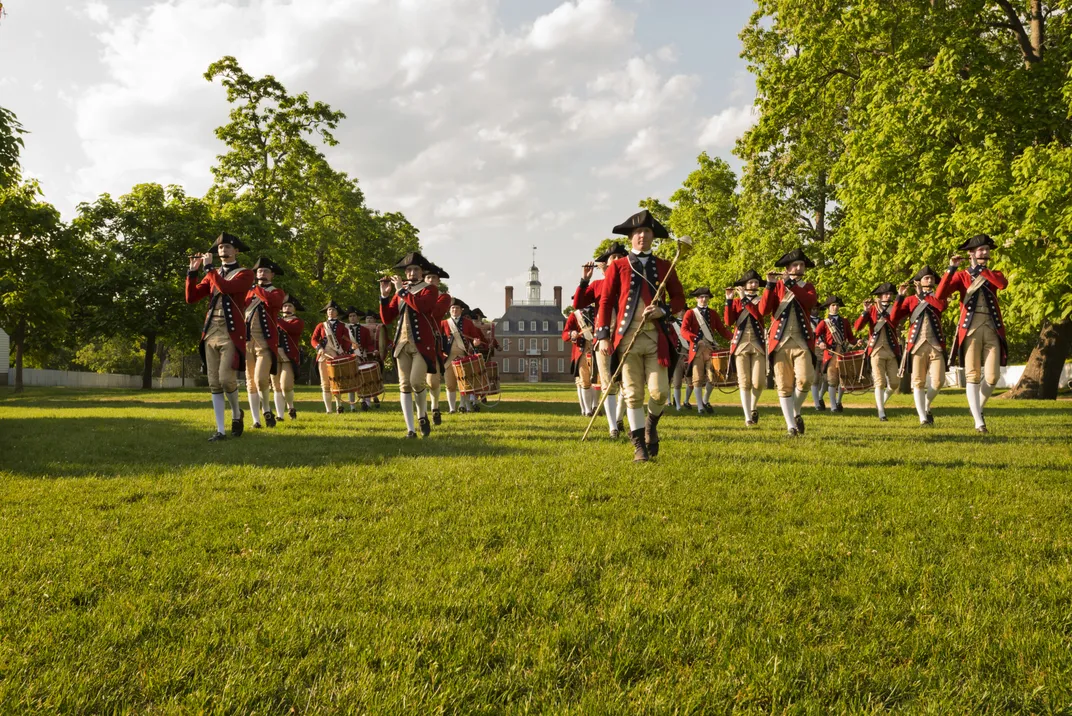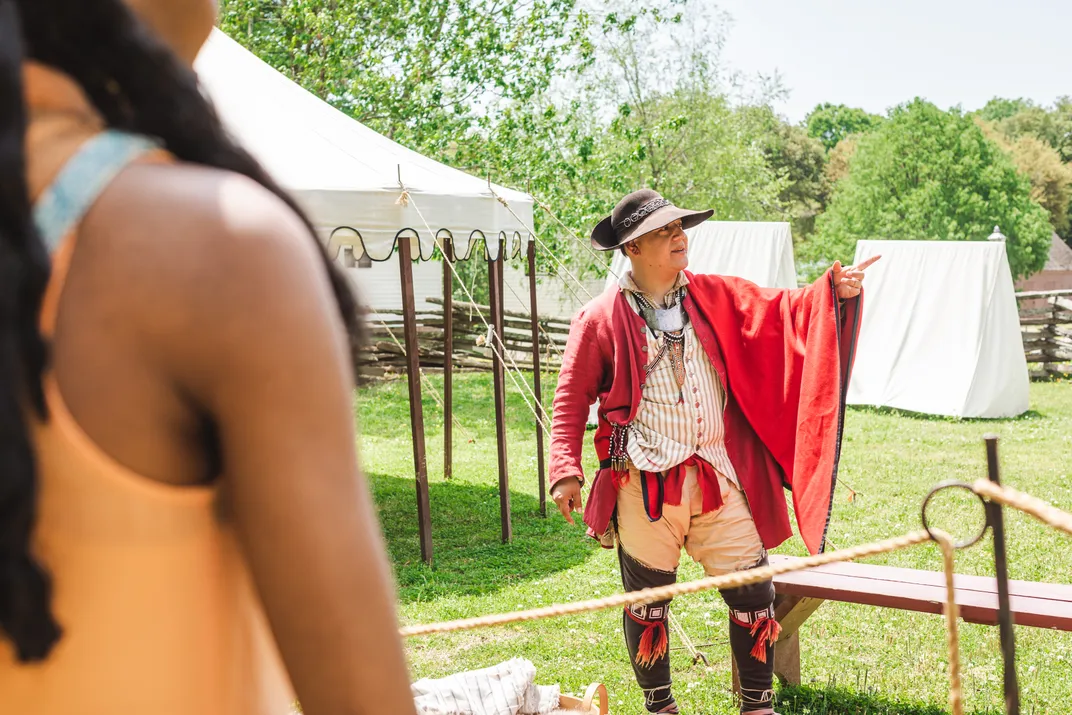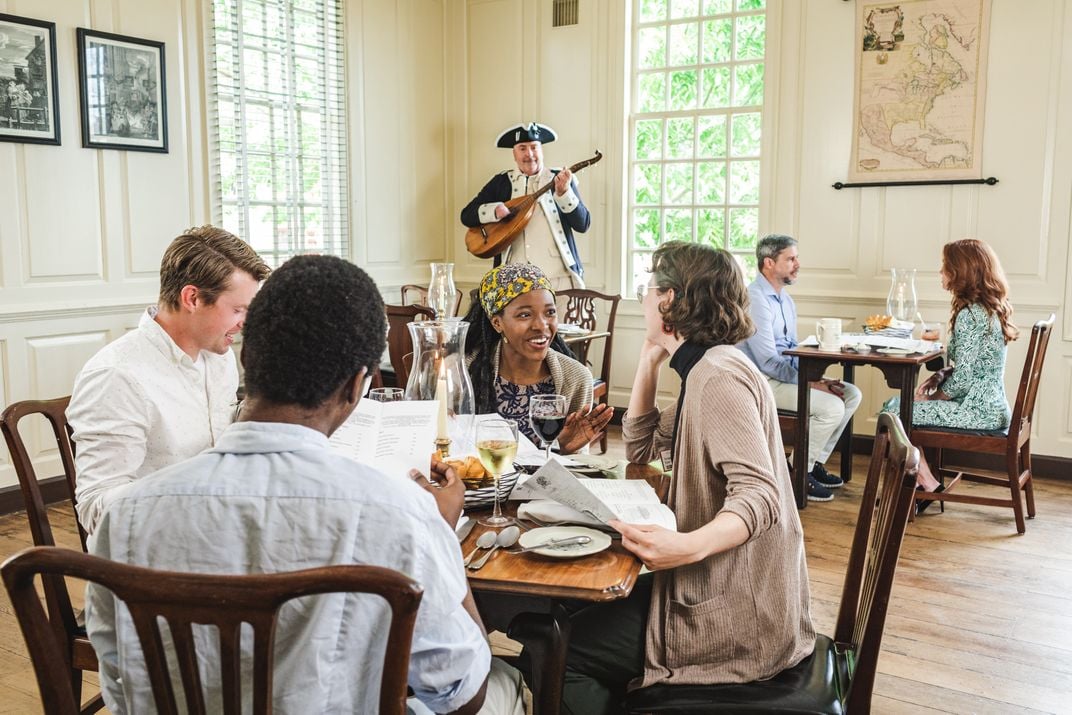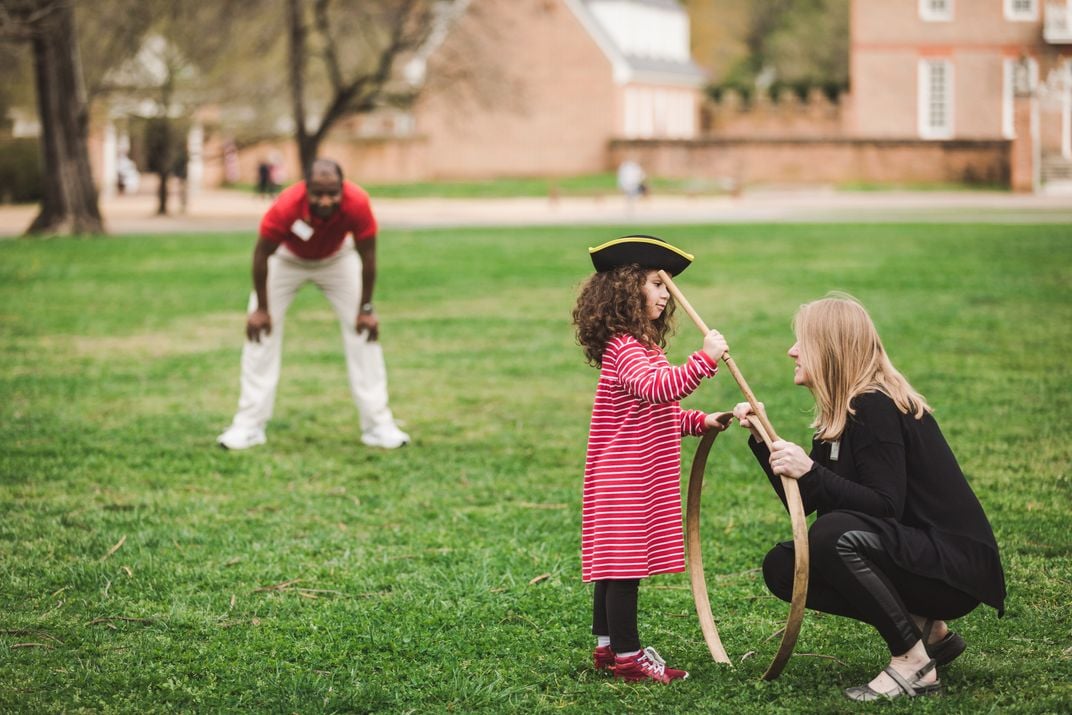It’s one thing to read about history, but it’s another thing entirely to live history in the present—and that’s precisely what it feels like to visit Colonial Williamsburg. A historic destination from our nation’s founding, it's alive and pulsing with activity—with 301-acres of carefully preserved buildings and historical sites, and a dynamic cast of interpreters bringing the landscape to life all around you. With luxury accommodations, award-winning culinary adventures, miles of meandering trails, and a variety of family-friendly activities at every turn, there’s no shortage of adventure year-round. Here, we’ve rounded up our top three reasons to spend a few days exploring Colonial Williamsburg this year, making memories that will last a lifetime.
1. Explore History and Experience New Discoveries

From the moment you set foot on the Historic Area, you’re fully immersed in the sights and sounds of 18th-century American life. Horse-drawn carriages traverse the town center—a one-mile by one-half-mile active city, dotted with carefully restored historic buildings and sites, including 88 original structures. Raucous laughter spills from the taverns, while seasoned interpreters, decked in period attire, stroll the streets to engage and entertain visitors. Masters of their craft, tradespeople, from apothecaries to blacksmiths and more—are always ready to interact with visitors directly.
But while history fills the streets around you, things in Colonial Williamsburg are decidedly not stuck in the past. With a commitment to ongoing research, new discoveries are continually unfolding in real time here. Visitors can observe active archeological digs throughout the town, as well as engage with researchers and historians about their latest findings, including the recent discoveries like the Custis Square Gardens, where researchers are conducting an active, four-acre dig at the former property of British Colonial politician John Custis IV, uncovering new secrets about the nation’s law making past. In 2023 visitors will be able to observe the Bray School—the oldest existing building in all of England’s North American colonies, where Black children (both enslaved and free) were once formally educated.
To see how these efforts, and others like them, are helping to expand programming for future visitors, and to paint a more complete—an inclusive—picture of life in 18th-century America, visit any of the destinations below, all of which are included with an admission ticket.
- First, visit the home of Peyton Randolph, former President of the Continental Congress, and examine the contrasts between freedom and slavery during this era. Learn how enslaved members of the Randolph house struggled to secure their freedom. Down the road, the First Baptist Church site is home to an active archeological dig to uncover its two structural predecessors: the mid-19th-century church itself, and the smaller building that came before it.

- Throughout Colonial Williamsburg, visitors can take in the American Indian Experience which offers historical context on the daily lives of American Indians within the colony. At the Encampment, located in the heart of the Historic Area, visitors can experience firsthand the roles that American Indians played in 18th-century life. This temporary housing plot would have been set up by colonial authorities as a place for Native delegations to stay while visiting the royal governor. Visitors will gain a deeper knowledge the complicated relationships once forged with native tribes—critical patchwork pieces in the fabric of American history.
- And don’t miss the two world-class art museums here, recently expanded and rife with historical art and artifacts. The Abby Aldrich Rockefeller Folk Art Museum bursts with whimsical folk art made by regional artisans, with exhibits including Navajo Weaving, Art of the Quilter, American Folk Pottery, the Art of Edward Hicks, and more. Under the same roof, the DeWitt Wallace Decorative Arts Museum is home to the world’s largest collection of southern furniture, as well as one of the largest collections of authentic British ceramics outside of England. There’s also a portrait gallery and a hands-on Education Studio where you and your family can bring art to life, too.
2. Relax in 18th-Century Style

Colonial Williamsburg is home to five unique accommodations in its Official Resorts collection, each offering guests a one-of-a kind experience—a welcome respite after a day of adventure, or a destination to seek out all on its own. The Forbes Travel Guide Five-star, AAA Five-diamond Williamsburg Inn rolls out the red carpet for travelers who appreciate the finer things, while the Williamsburg Lodge Autograph Collection gives guests a comfortable and familiar base for their exploits, complete with all the modern amenities. Just a short walk from the center of town, the cozy Griffin Hotel offers multiple adjoining room configurations ideal for traveling families and groups, while the more centrally located Williamsburg Woodlands is a budget-friendly respite that serves up complimentary continental breakfast to help guests start the day right. And for those seeking a truly authentic experience, the Colonial Houses are true to their name, offering a sleep inside the meticulously restored homes of real 18th-century Williamsburg citizens. What’s more, guests who book their stay directly through one of these five official Colonial Williamsburg hotels will get two length-of-stay admission tickets to the Historic Area and Art Museums.

For those who’ve worked up an appetite, Colonial Williamsburg has over 19 unique dining locations to refuel, including four historic taverns that give a taste of 18th-century life in America. Celebrate the 250th anniversary of King’s Arms Tavern, where you and your family can sample a mouthwatering 18th-century inspired menu; experience exquisite culinary delights at the iconic Williamsburg Inn’s Rockefeller Room; or nosh on colonial-inspired pub fare at Chowning’s Tavern on Duke of Gloucester Street, arguably the most historic street in America. Of course, true history buffs won’t want to miss Christiana Campbell’s Tavern either, since it’s long rumored to have been George Washington’s favorite tavern in town.
Relax outdoors with one of Colonial Williamsburg's myriad of offerings, such as the award-winning Golden Horseshoe Golf Course—a Robert Trent Jones-designed track that’s been called “one of America's 50 Greatest Public Courses” by Golfweek magazine. For those who prefer to work on their long game, there’s also the Golden Horseshoe Golf Club’s Green Course, longer and a little more forgiving than the Gold. The Green Course is appealing to all levels of golfers.
And for those more content to walk without clubs, the Arboretum & Gardens invites visitors to discover garden treasures nestled behind the homes, shops, and public buildings of Colonial Williamsburg’s Historic Area.
3. Entertain the Whole Family

From theatrical performances, to the clatter of a horse-drawn carriage, to the sight of molten pewter being poured—there is something uniquely entertaining for everyone in the family on a trip to Colonial Williamsburg.
Start by seeing the trades in action with a trip to the Geddy Foundry. Watch the founder cast and finish buckles, bells, spoons, and other objects, heating bronze, brass, pewter and silver, and pouring the molten metals into casts. A quick walk around will introduce you to over 20 specialized trades, with everything from blacksmithing to woodworking to gunsmithing, among others.
Take a leisurely ride through the Historic Area by horse-drawn carriage, and see the city from a different view. From the Red Carriage to the Romantic Wythe, the Madison Carriage to the Stage Wagon, there are elegant and faithful carriages to carry groups of all sizes through the winding streets of Colonial Williamsburg and beyond. What’s more, the town’s Rare Breeds program continues to invest in the lives and futures of its horse and cattle herds by promoting genetic diversity in livestock that once thrived in the 18th century. And you can learn all about that, and more, on the one-hour Bits and Bridles walking tour, a family favorite, and a must for all animal lovers.
Over at the Play House Stage, site of the first purpose-built theater in all of the American colonies, dating to just before 1720. Here, you’ll find a packed schedule of open-air performances helmed by the local Jug Broke Theatre Company. And come nightfall, you’ll find an array of evening programs to add a bit of drama in the dark. From ghost tours that take you inside some of the nation’s most haunted locations, to elegant 18th-century musical performances, sunset means the fun is just getting started in Colonial Williamsburg.


/https://tf-cmsv2-smithsonianmag-media.s3.amazonaws.com/filer_public/db/02/db02f2fb-3352-4786-bf9c-909e77d8a587/cwf-summer_2018_parson-couple_tvc-075.jpg)